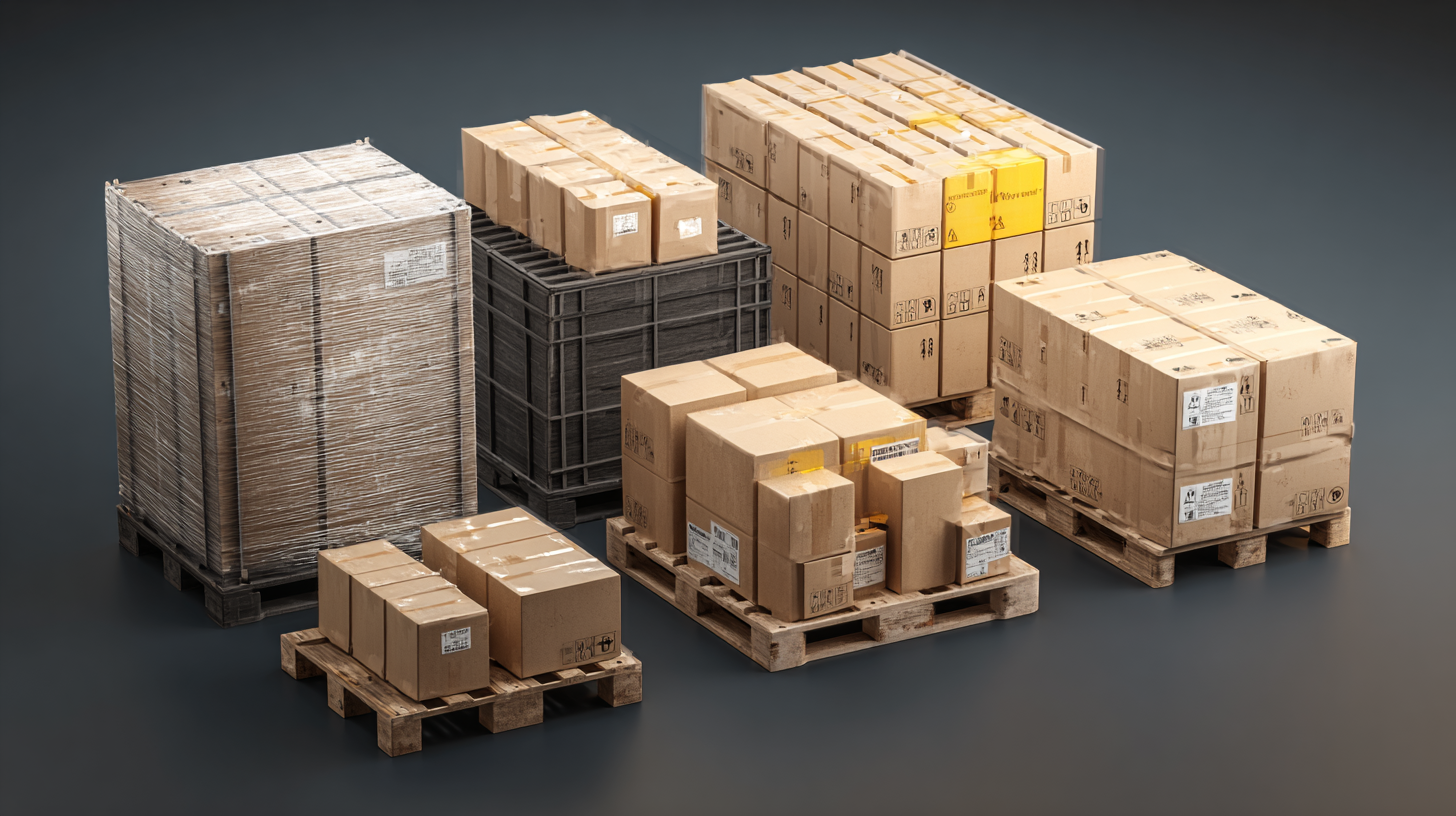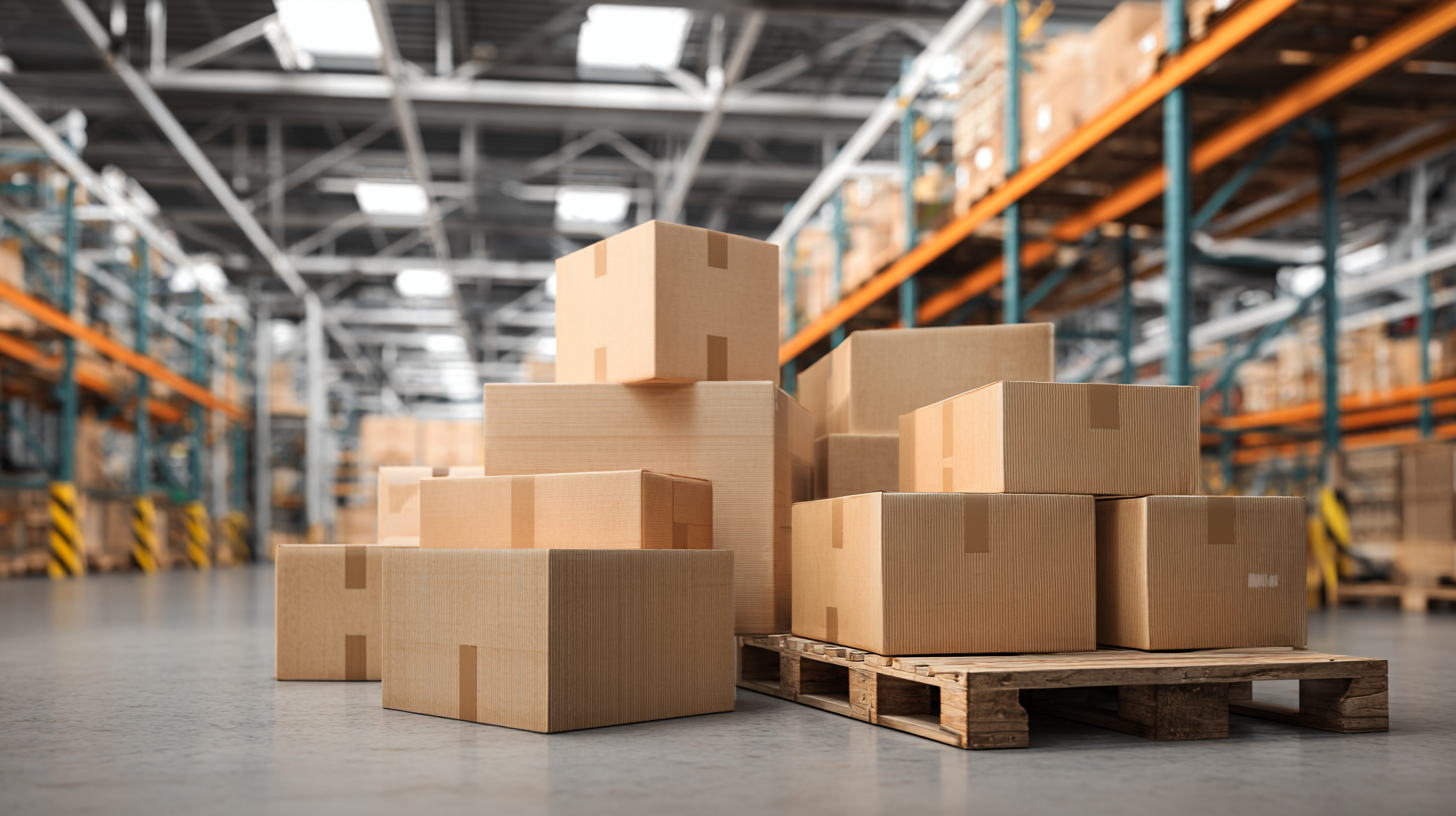Mastering Best Industrial Packaging Specifications and Tips for Optimal Use
In today's fast-paced manufacturing environment, effective industrial packaging plays a crucial role in ensuring product safety, efficiency, and sustainability. According to a recent report by the Freedonia Group, the global industrial packaging market is projected to reach $278 billion by 2025, driven by increasing demand for efficient supply chain solutions and environmentally friendly materials. To meet the expanding requirements of various industries, mastering best industrial packaging specifications is imperative. This not only minimizes product damage and waste but also enhances brand reputation and consumer satisfaction. Incorporating innovative design techniques and adhering to industry standards enable businesses to optimize their packaging processes, ultimately leading to significant cost savings and improved operational performance. In this blog, we will explore essential tips and specifications to master industrial packaging for optimal use.

Understanding the Significance of Industrial Packaging Specifications in Today’s Market
In today’s competitive marketplace, understanding the significance of industrial packaging specifications is paramount for businesses aiming to enhance their operational efficiency and customer satisfaction. According to a report by Smithers Pira, the global packaging market is projected to reach $1 trillion by 2024, highlighting the critical role that proper packaging plays in supply chain logistics. Packaging that meets industry standards not only ensures safety and compliance but also optimizes product protection, reducing the risk of damage during transit. In fact, 46% of packaged goods arrive at their destination damaged, which underscores the need for robust packaging specifications.

Furthermore, precise packaging specifications can lead to significant cost savings. A study by the Packaging Association revealed that companies adhering to optimal packaging practices can reduce their material costs by up to 15%. Efficient packaging design can also result in reduced shipping volumes, contributing to lower transportation expenses. By focusing on sustainable materials and innovative designs, businesses can improve their environmental impact while also catering to the increasing consumer demand for eco-friendly products. In an era where every detail matters, understanding and implementing industrial packaging specifications has never been more crucial for maintaining a competitive edge in the market.
Key Industry Standards for Industrial Packaging: Ensuring Compliance and Safety
When it comes to industrial packaging, adhering to key industry standards is crucial for ensuring compliance and safety throughout the supply chain. Various organizations, such as the International Organization for Standardization (ISO) and the American Society for Testing and Materials (ASTM), provide guidelines that help businesses maintain quality control and protect their products. Understanding these standards allows manufacturers to select the appropriate materials, designs, and methods for packaging, ensuring that goods can withstand transportation stresses while remaining secure and intact.
Moreover, compliance with industry standards not only minimizes risks associated with damage and liability but also enhances the reputation of a company. Implementing best practices in industrial packaging—including the use of certified materials, proper labeling, and effective tracking systems—helps in maintaining safety throughout the handling process. This adherence not only safeguards products but also promotes safe working environments, meeting both regulatory requirements and customer expectations for quality and reliability. Therefore, investing in knowledge about packaging standards can lead to significant benefits, from operational efficiency to improved customer satisfaction.

Emerging Trends in Sustainable Packaging for Industrial Applications
Emerging trends in sustainable packaging for industrial applications are increasingly shaping the landscape of supply chain management. According to a recent report by Smithers Pira, the global market for sustainable packaging is projected to reach $500 billion by 2025, driven by the rising demand for eco-friendly materials and practices. Industries are moving towards solutions that not only reduce environmental impact but also enhance operational efficiency. For instance, innovations such as biodegradable plastics and recyclable materials are becoming standard practices, with companies like Unilever committing to using 100% recyclable or reusable packaging by 2025.
Furthermore, the integration of technology in sustainable packaging is creating significant efficiencies. A study by McKinsey found that companies leveraging smart packaging solutions can reduce waste and improve the lifecycle management of their products. The use of IoT (Internet of Things) for tracking shipments and monitoring product conditions is enhancing sustainability efforts, allowing companies to optimize packaging use and minimize waste. As these trends continue to evolve, organizations that prioritize sustainable packaging will not only fulfill regulatory requirements but also appeal to a growing base of environmentally-conscious consumers.
Mastering Best Industrial Packaging Specifications and Tips for Optimal Use - Emerging Trends in Sustainable Packaging for Industrial Applications
| Packaging Type | Material | Sustainability Rating | Cost ($/unit) | Applications |
|---|---|---|---|---|
| Corrugated Boxes | Recycled Paper | A+ | 0.50 | E-commerce, Retail |
| Biodegradable Wrap | PLA (Polylactic Acid) | A | 0.80 | Food Industry, Pharmaceuticals |
| Reusable Containers | Polypropylene | B+ | 2.00 | Manufacturing, Distribution |
| Wooden Pallets | Reclaimed Wood | A | 15.00 | Heavy Goods, Warehousing |
| Eco-Friendly Mailers | Kraft Paper | A+ | 0.30 | Direct Mail, Shipping |
Maximizing Efficiency: Best Practices for Selecting the Right Packaging Materials
Choosing the right packaging materials is crucial for maximizing efficiency in any industry, especially when considering the specific needs of your product. For example, when selecting materials for hazardous products, it’s essential to ensure compatibility to prevent leaks or contamination. This is similar to how
vapor cartridge hardware
must align with cannabis extract formulations for optimal performance. Understanding the attributes of your packaging materials can significantly enhance product safety and efficacy.
Tip 1: Always conduct compatibility tests between your product and packaging materials. This not only ensures safety but also maintains the integrity of the product throughout its lifecycle.
Additionally, consider the sustainability of your materials. As industries move towards more environmentally friendly practices, opting for
recyclable or biodegradable packaging
can minimize waste and promote a circular economy. This ties back to initiatives aimed at reducing waste, emphasizing the importance of responsible material selection in packaging.
Tip 2: Implement a waste reduction strategy by choosing materials that can be reused or recycled, which can also contribute to cost savings in the long run.
The Economic Impact of Proper Packaging on Supply Chain Management and Cost Reduction
Proper packaging plays a crucial role in optimizing supply chain management and driving cost reduction. According to a study by the Council of Supply Chain Management Professionals (CSCMP), efficient packaging can reduce logistics costs by up to 30%. This is largely due to the significant impact packaging has on transportation and storage efficiency. For instance, using standardized packaging sizes can maximize container load capacities, thereby reducing the frequency of shipments and minimizing overall transportation costs.
Moreover, the World Packaging Organization reports that well-designed packaging can lead to reduced product damage during transit, further enhancing supply chain reliability. In fact, businesses can save approximately $1 billion annually due to decreased spoilage and damage associated with optimized packaging solutions. Additionally, proper packaging can streamline operations, as it often simplifies handling processes and enhances inventory turnover. These factors underscore the economic importance of investing in quality packaging solutions to support a more efficient and cost-effective supply chain.

